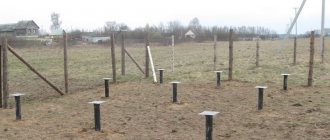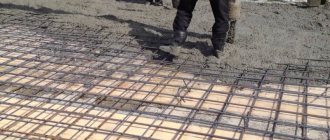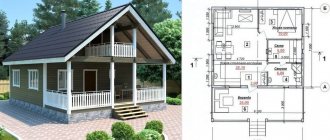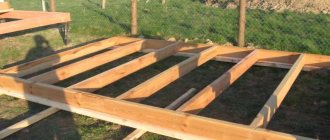Before starting construction on a plot of land that falls within a water protection zone (on the shore of a reservoir), you should understand what construction restrictions exist in the water protection zone, how to obtain a construction permit and find out whether approval is required from the federal fisheries agency. To clarify all these issues, let’s turn to the current legislation and see what construction standards in the water protection zone have been adopted in 2021, and also consider whether it is possible to build houses on the banks of a river, lake or sea.
What are water protection zone lands?
Let's turn to the Water Code (Article 65) and find out what water protection zone lands are. These are lands that are adjacent to the shores of reservoirs and restrictions on their use are primarily related to protecting seas, rivers, lakes, reservoirs, streams and other water bodies from pollution. In addition to the water protection zone, the code contains the concept of coastal strips. They are subject to special additional protection. That is why, when buying a plot of land near the shore, you should find out in advance whether it is possible to build houses in the water protection zone and what restrictions there are on construction. To clarify at what distance from the river (sea, lake, stream) you can build a house, let’s turn again to the Water Code (Article 6). It turns out that all water bodies are state and municipal property and are places of public use (with rare exceptions). The law establishes that no structure can be used to block 20 meters from the shoreline of any body of water, and if it is a stream or small river (up to 10 km long), then 5 meters. Thus, not only forbidden to build houses 20 meters from reservoirs , but also to erect fences to enclose the territory.
When buying a plot near a reservoir, remember this! As for the size of the water protection zone, depending on the water body it varies from 50 to 500 meters.
Features of construction near water
When constructing a building in a water protection zone, the distance from the river must be observed so as not to block access to water. If you are planning to build a cottage close to the water and are going to create your own beach, you need to keep in mind that the Water Code of the Russian Federation prohibits blocking off an area of 5-20 meters with fences. You can find out from your local government how many meters can be allocated for the beach.
The suburban luxury real estate market in the Moscow region is less susceptible to change than the urban market. This is due to the cost of objects, for example, the average price of high-status home ownership on the primary market is 150 million rubles.
Buying a house in a cottage village outside the city is a joyful event. But for families with children, a logical question immediately arises: are there public or private educational institutions near their new place of residence? Parents of very young children are wondering whether there will be any problems with enrolling their child in kindergarten.
Real estate located near water bodies (lakes, rivers, reservoirs, etc.) has always been particularly popular among private developers. This is explained by the excellent ecology, magnificent landscapes and the opportunity to get new, unique opportunities for countryside recreation.
When planning to build a house near water protection zones, it is important to follow certain rules. This is due to the fact that private construction in such areas is often prohibited or included in the list of relative restrictions. The latter means that development of the coastline is possible only if the conditions specified in the law and the rules of the local administration are met.
In this article we will analyze the main nuances and limitations that a private developer should know before building a cottage on the banks of a river or lake.
Construction of a house in a water protection zone - how and where to obtain a building permit
In addition to the general procedure for registering real estate, which is regulated by the Town Planning Code and laws on cadastral activities, the local administration should clarify which rules for building a house apply specifically to your site, located in a water protection zone. Thus, for each plot of land, there are individual possibilities for combining the types of permitted use. For example, your site is located in a water protection zone. The Water Code does not prohibit the construction of residential buildings, but it does introduce some restrictions on construction. Therefore, plan buildings taking into account building permits in the water protection zone and coordinate construction in advance.
Is it possible to build near a pond or river?
According to the Water Code of the Russian Federation, building a cottage or house near water is allowed subject to the following standards:
- The owner has ownership rights to the plot near the reservoir on which it is planned to build a house.
- The territory must be suitable for individual housing construction.
- Construction and urban planning standards are met.
In accordance with the Water Code of the Russian Federation, any coastal lands have a special status. Before building housing, you need to familiarize yourself with the norms of the Water Code.
Water protection zone, what are the restrictions on construction?
The use of land and water involves a number of restrictions, not only on fishing, swimming, and parking, but also on plowing and construction. Therefore, when buying a plot of land in a water protection zone, ask what restrictions exist on construction on your site. The main restrictions on construction in the water protection zone are established by the Water Code (Article 65), Government Decree No. 17 of January 10, 2009 on establishing the boundaries of water bodies, as well as orders of the Ministry of Natural Resources and other acts. The main limitation is the construction of a facility that will pollute a nearby water resource. The requirements are primarily for drainage and sewerage. Other restrictions may be regulated and established by local laws.
Thus, we found out that construction within the boundaries of water protection zones is permitted, but the requirements for the facility have been tightened.
Rules for the development of coastal zones
To preserve the environment, owners and users of coastal areas are required to comply with certain standards. In case of violation, administrative and criminal liability, demolition of buildings, as well as high fines are imposed.
Types of reservoirs
It should be understood that any coastal lands in Russia have a special status. All actions related to them are regulated by special Water Regulations.
According to the law, all reservoirs are classified into two groups:
- underground;
- superficial.
In turn, surface water bodies are divided into:
- rivers and streams;
- reservoirs;
- lakes;
- channels;
- seas.
These reservoirs can be used for various purposes. For example, for the purpose of water supply to a populated area, electricity generation, fishing, timber transportation, etc. Depending on the purpose of use, private construction is either allowed or prohibited.
What is a water protection zone?
A water protection zone is a piece of land that is located at a certain distance from the coastline. Such territories are subject to special control, even if they are owned by right of ownership.
To understand what actions are permitted in the water protection zone, the owner of the site needs to contact the federal body and the cadastral registration service. The official response will contain information from a special register.
Any construction or other economic activity should begin only after receiving documents confirming the right to conduct them.
Boundaries of the water protection zone
They are determined in order to facilitate monitoring of compliance with the regime of use in the specified areas. The latter becomes part of a set of measures aimed at their improvement and protection. In this way, the authorities strive to improve the ecological, hydrological, sanitary and hydrobiological state of the environment.
The width of the protected area is calculated based on the coastline. The latter is determined by the water level in the warm season.
According to the Water Code (Article 65, Part 4), the boundaries of the water protection zone are indicated in the areas, taking into account the length and width of the water body:
- 50 m – for rivers and lakes less than 10 km long;
- 100 m – from 10 to 50 km;
- 200 m – more than 50 km.
The size of the protective strip also depends on such an indicator as the slope of the bank.
If a body of water is a source of drinking water, sanitary protection is installed near it. In this case, it is strictly prohibited to engage in construction or other activities on the site.
Information about the territories located near the coastline is indicated in the cadastral passport for the land plot.
Coordination of construction with the federal fisheries agency - how and where to get it.
In accordance with Law 166-FZ dated December 20, 2004 “On Fisheries and Conservation of Aquatic Biological Resources” and Government Decree No. 384 dated April 13, 2013, construction is coordinated with local territorial fisheries departments. Therefore, before building a private, residential or country house in a water protection zone, you should check with the local department of architecture and urban planning whether you need to obtain construction approval from Rosrybolovstvo.
Who should obtain approval from Rosrybolovstvo
All actions to prepare permitting documentation fall on the shoulders of the owner, so to the question of who should receive approval from Rosrybolovstvo, the answer is obvious - the owner of the land plot who started the construction. For approval, you need to collect a package of documents; you can do this yourself or seek help from specialists.
Approval procedure
We contact the local department of architecture and clarify whether construction is allowed in the water protection zone and whether coordination with the fishery is required. If approval is necessary, then we submit an application and a package of documents to the territorial department of the federal fisheries agency, or through the MFC or State Services. The application must indicate the source of water supply and type of sewerage system.
Documents for approval
- Statement
- passport
- title documents for the site
- GPZU
- other documents that may be required in individual cases
A ban on the construction of houses and other objects in the water protection zone in 2021
Let’s summarize and determine what bans exist on the construction of houses and other objects in the water protection zone in 2021:
- You cannot build closer than 20 meters from bodies of water;
- You cannot start construction in a water protection zone without obtaining appropriate approval from Rosrybolovstvo;
- Before buying a plot and building a residential building in the water protection zone of a river, lake, or even stream, inquire about obtaining all the necessary permits so as not to face a ban on construction in the water protection zone in 2021.
Nuances of construction in coastal areas
The main feature of areas near water is that they cannot be completely fenced off from outsiders.
The fact is that most water bodies on the territory of the Russian Federation (rivers, lakes, reservoirs, etc.) are state property, which means that any citizen can use them. Any fences and structures that interfere with free access to water are considered illegal buildings.
Another important nuance: any land plots located within the coastline cannot be privatized.
It is important to consider that in order to start building a house or other buildings in a water protection zone, you need to have a formalized lease agreement or a certificate of ownership of the selected plot.
The owner of the site will also have to obtain permission for individual housing construction. It should be understood that if any violations of SNiPs regarding the placement of buildings on the site are found, the permit will simply not be issued.
Persons who plan to open a personal subsidiary plot (LPH) in such territories should take into account that grazing of animals, storage of soil and plowing of land are prohibited near the coastline.
There are established restrictions on the use of plots for agricultural purposes:











